|
|
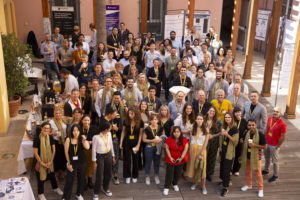
Christopher Dereppe and Bruno André participated to the last “TOR de France” meeting organized at Nice on 5-6 October. This international meeting gathers every two years, in a nice place in France, scientists studying the “Target Of Rapamycin” (TOR) kinase complex involved in control of cell growth and associated with several diseases including cancers. The meeting was of high interest and offered an opportunity to meet again many colleagues interested in TOR.

Luis Sousa, Christopher Dereppe and Bruno André participated to the 38th international “Small Meeting on Yeast Transport and Energetics (SMYTE)” organized last September in Blankenberge (Belgium) by Pr. Patrick Van Dijck (KUL, Belgium). The Smyte annually gathers scientists from all countries who are interested in diverse aspects yeast membrane transporters: structure-function relationships, regulation, and signaling properties. Luis presented a poster about his work on amino-acid excretion by yeast cells and Christopher and Bruno gave presentations about the control of TORC1 in yeast.
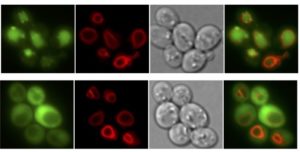
We are delighted to announce that the laboratory has been awarded new funding to study the relationship between cell aging, the lysosome and TORC1 in yeast. This project is being carried out in collaboration with Prof. Cédric Delporte at ULB’s Faculty of Pharmacy. The initial team made of Dimitrios Zisimopoulos (postdoc) and Charlotte Felten (technician) now includes Chloé Troch (PhD student) and Alexandre Deschamps (pregraduate student). Chloé has completed her Master last year in the laboratory and has been awarded an FNRS “Aspirant” grant. She was also awarded the prize for the best Master’s student – double congratulations to her!
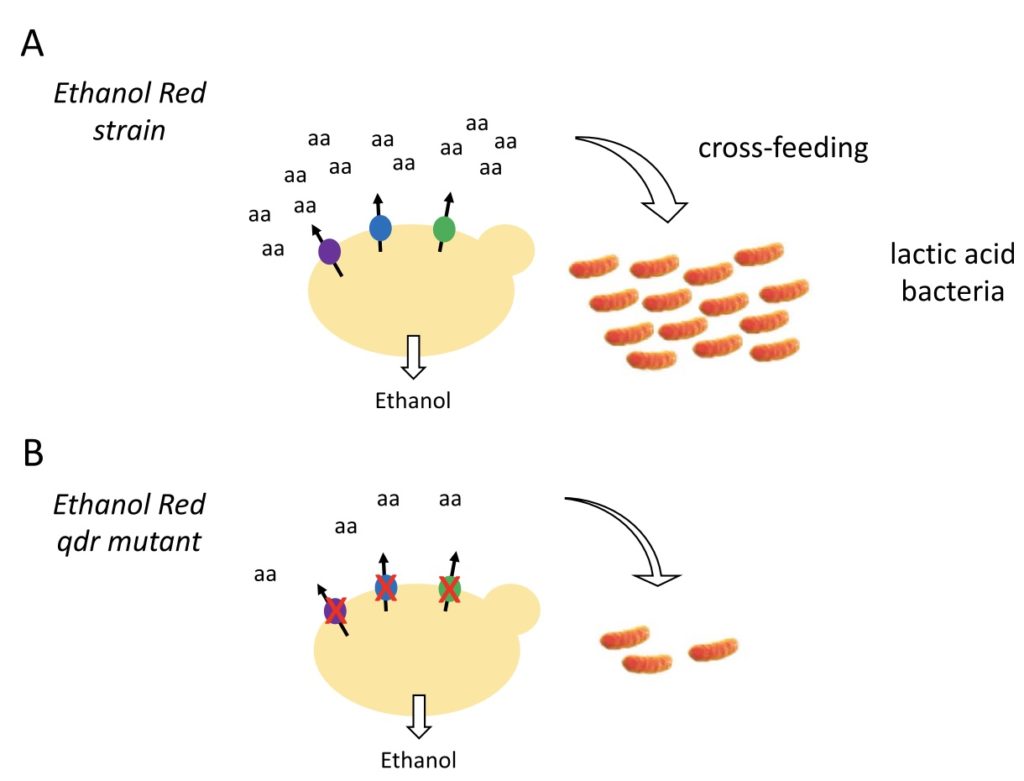
We are pleased to announce the publication in Scientific Reports of an article entitled “Deletion of QDR genes in a bioethanol‐producing yeast strain reduces propagation of contaminating lactic acid bacteria“. This study reports that the yeast Ethanol Red strain commonly used to produce bioethanol excretes amino acids via Qdr membrane transporters. This excretion favors propagation of co-cultivated lactic acid bacteria, which cannot grow without an external supply of amino acids. A derivative yeast mutant in which QDR genes have been deleted via CRISPR-Cas9 displays markedly reduced cross-feeding of these bacteria without reduction of ethanol production. Given that bacterial contaminations in yeast fermentation tanks are a recurring problem for the bioethanol production industry, this finding opens the perspective of using yeast strains with mutations in QDR genes to reduce the risk of such contaminations. This study, which has been mainly conducted by Dr. George Kapetanakis during his PhD work, is the result of a fruitful collaboration with Dr. Isabelle Georis (Labiris), Dr. LaurenceVan Nedervelde (Labiris), and the “Syngulon” startup company.
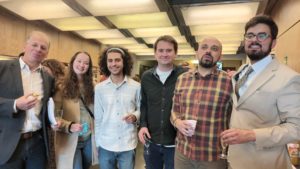
On September 30th, George Kapetanakis (on the right in the picture) publicly presented his PhD work and successfully received his diploma. His research dealt with the poorly known process of amino-acid excretion by yeast cells. He characterized two novel amino-acid exporters and showed that these proteins importantly contribute to cross-feeding by yeast of co-cultivated lactic acid bacteria which cannot grow without an external supply of amino acids. G Kapetanakis also showed that the same proteins mediate excretion of amino acids and cross-feeding of lactic acid bacteria by the Ethanol Red yeast strain used in industrial bioethanol production. This observation is important since contamination of fermenters by lactic acid bacteria is a major issue in bioethanol production. We thus proposed in a novel patent of ULB that the utilization of yeast mutants lacking specific amino-acid exporters reduce the risk of contaminations of bioethanol production tanks by lactic acid bacteria. George Kapetanakis has now been hired as Research and Innovation Scientist in the young Paleo startup (see previous post). Congratulations and thanks to George for his scientific achievements and their potential industrial applications, and good luck with the new job in Paleo!
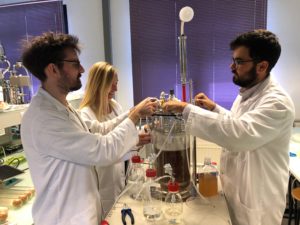
The startup company Paleo exploits yeast to produce GMO-free, heme proteins of beef and other animals for plant-based meat alternatives, with the ultimate goal of making food production more ethical and sustainable. Paleo recently moved into the lab space and offices next to our lab in the IBMM (Institute of Molecular Biology and Medicine). We established excellent contacts with the Paleo team members and we look forward to collaborate with them. Welcome to Paleo and great success in the future!
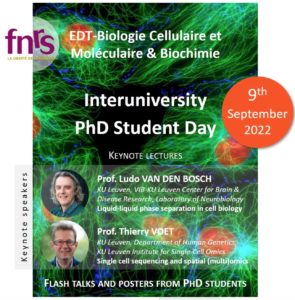
Nadia Guarini, Luis Sousa, Christopher Dereppe and Bruno André participated to the Interuniversity PhD student day organized in Namur last September 9th. As most other PhD students who attended this event, Nadia, Luis and Christopher presented a flash talk and a poster. This PhD student day, which was cancelled the last two previous years, was a big success.
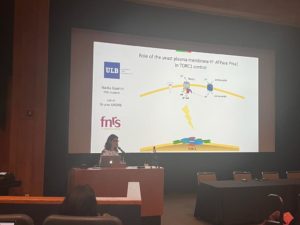
Nadia Guarini attended the Yeast Genetics meeting 2022 organized at University of California in Los Angeles (August 17–21). She presented a “flash-talk” and a poster about her work on the role of the yeast H+-ATPase (Pma1) in control of TORC1 in yeast. This conference, the first edition of which was organized 40 years ago, is the “premier meeting for students, postdoctoral scholars, research staff, and principal investigators studying various aspects of eukaryotic biology in yeast, a major experimental model for understanding human cell biology and mechanisms of human disease“.
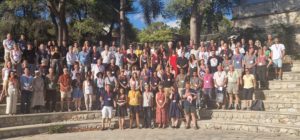
B. André participated to the EMBO workshop “Membrane transporters as essential elements of cellular function and homeostasis” organized in Chania (Crete) on August 23-27. He was invited to give a presentation entitled “Interlinks between transporters and TORC1”. This wonderful workshop organized by Pr. G. Diallinas gathered many experts studying the 3D structure, function, regulation, links with diseases and other aspects of membrane transporters from various organisms.
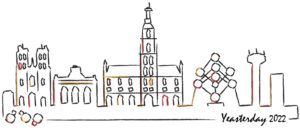
On May 13, the group of Isabelle Georis and our laboratory co-organized the “Yeasterday” meeting in Brussels. This annual meeting gathers scientists from the Benelux who use yeast as a model system or a tool in their research. The oral presentations given by young colleagues (PhD students and postdocs) were of top quality. Luis Sousa from our lab had the opportunity to present his work about amino acid excretion by yeast cells. The final plenary lecture was presented by Dr. Isabelle Sagot (CNRS, IBGC, Bordeaux) about the “The cell biology of quiescent yeast”. We thank all speakers, attendees and sponsors (Paelo, Syngulon FNRS, Rocc, aquilabiolabs) for this exciting science sharing day !
|
|









